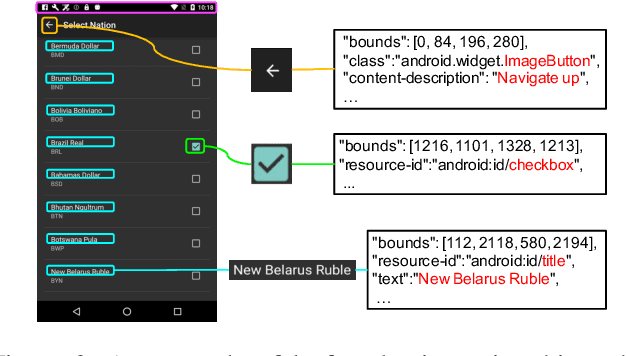ActionBert: Leveraging User Actions for Semantic Understanding of User Interfaces
Paper and Code
Jan 25, 2021



As mobile devices are becoming ubiquitous, regularly interacting with a variety of user interfaces (UIs) is a common aspect of daily life for many people. To improve the accessibility of these devices and to enable their usage in a variety of settings, building models that can assist users and accomplish tasks through the UI is vitally important. However, there are several challenges to achieve this. First, UI components of similar appearance can have different functionalities, making understanding their function more important than just analyzing their appearance. Second, domain-specific features like Document Object Model (DOM) in web pages and View Hierarchy (VH) in mobile applications provide important signals about the semantics of UI elements, but these features are not in a natural language format. Third, owing to a large diversity in UIs and absence of standard DOM or VH representations, building a UI understanding model with high coverage requires large amounts of training data. Inspired by the success of pre-training based approaches in NLP for tackling a variety of problems in a data-efficient way, we introduce a new pre-trained UI representation model called ActionBert. Our methodology is designed to leverage visual, linguistic and domain-specific features in user interaction traces to pre-train generic feature representations of UIs and their components. Our key intuition is that user actions, e.g., a sequence of clicks on different UI components, reveals important information about their functionality. We evaluate the proposed model on a wide variety of downstream tasks, ranging from icon classification to UI component retrieval based on its natural language description. Experiments show that the proposed ActionBert model outperforms multi-modal baselines across all downstream tasks by up to 15.5%.
 Add to Chrome
Add to Chrome Add to Firefox
Add to Firefox Add to Edge
Add to Edge